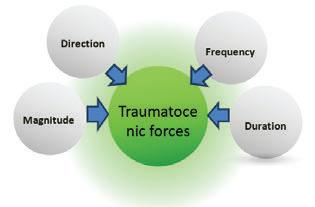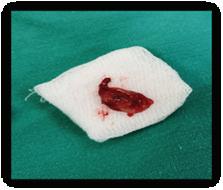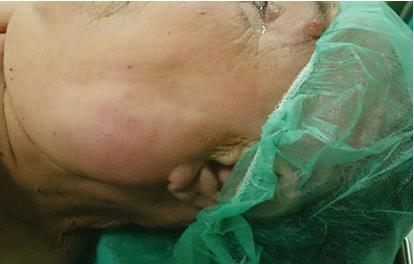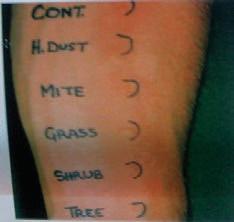
11 minute read
CLINICAL AND EPIDEMIOLOGICAL CHARACTERISTIC OF ORAL LICHEN PLANUS (OLP
UDK: 616.311-002.2-076-036.22 PUNIM BURIMOR SHKENCOR (PBSH)
Advertisement
UDK: 616.311-002.2-076-036.22 ORIGINAL SCIENTIFIC PAPER (OSP)
1 Faculty of Medical Sciences – University of Tetova 2 Private health Institution “Dentalcair”, Skopje Email: jetmire.jalimani@unite.edu.mk
ABSTRACT
Background: Oral lichen planus (OLP) is a chronic inflammatory disease, the cause of which remains unknown. In the last few years, significant advances have been made in understanding the mechanisms involved in the pathogenesis of the disease.
Objective: The purpose of this investigation was to describe the clinical and epidemiological characteristics of lichen planus.
Methods: A total of 147 charts of patients with histologically confirmed OLP were collectedfrom 5 years from Private health Institution”preventiva dental” Gostivar, Private health Institution “Apolon”, Private health Institution “Viva DENT” Gostivar and Private health Institution “Dentalcair”, Skopje. Patients of either gender aged above 12 years, fulfilling the diagnostic criteria for OLP were enrolled for study History regarding the onset and duration,symptoms, addictions was elicited followed by oral, cutaneous and systemic examination. Biopsy was taken when the diagnosis was doubtful or malignancy was suspected. The data were analyzed using SPSS software version 11.0 for frequency and percentage.
Results: Of the 147 patients, 62.9 % were females and 37,1% were males. The most common clinical presentation was the reticular type from topographic aspects which is localized bilaterally in the buccal mucosa between retromolar region and masticator line. Accompanying comorbidities are hypertension 58,5 % and Diabetes 21,77%.
Conclusion: From the results we can conclude that lichen planus is a dermatology condition that can present on the skin, oral cavity or in the combination skin and oral mucosis.
Skin involvement of lichen planus was found in 40,17% .
Keywords: Oral lichen planus, hypertension, diabetes, precipitating factors.
1. INTRODUCTION
Lichen planus is a chronic inflammatory mucocutaneous disease which frequently involves the oral mucosa. Other mucous membranes (including the genitalia, esophagus, and conjunctiva) and skin appendages (e.g., scalp hair and nails) can also be affected. In many patients, the onset of OLP is insidious, and patients are unaware of their oral condition. The pathogenesis and etiology of lichen planus remains unclear, and it appears to be an autoimmunedisease. It is as-sociated with multiple disease processes and agents, such as viral and bacterial infections, autoimmune diseases, medications, vaccinations and dental re-storative materials. Cutaneous lichen planus is characterized by flattopped, violaceous papules. The lesions may result in long-standing residual hyperpigmentation, especially in dark-skinned patients [1,6]. Oral lichen planus is characterized by symmetric reticular lesions that resemble a white, lacelike network, as well as by papules, plaques, erythematous lesions, and erosions [7] The disease affects 0,5-2% of the population. This disease has most often been reported in middle-aged patients 3060 years of age and is more common in females than in males [2] OLP is rare in children [3,4]. The clinical evaluation of the OLP is based on the six clinical forms described by Andreason [11] reticular, papular, plaque, atrophic, erosive, and bul-lous. Localisation on atrophic and erosive forms are on the gums and manifest as a desquamative gingivitis, rarely on the palate and floor of the mouth [9-12] Multiple mucosal lesions have symmetrical distribution, particularly on the mucosa of the cheeks, adjacent to molars, and on the mucosa of the tongue. Erosive form of OLP may mimike the gingival manifestation of many other dis-eases such as cicatrical phemphigoid, pemphigus vulgaris, epidermolysis bullosa acquisita, and linear IgA disease [13,14] and is followed by burning sensation and pain [15]. Reticular form is presented with slender white lines (Wickham’s striae) radiating from the papules without any symptoms. There is a relationship between OLP and oral cancer. Therefore, OLP should be considered a precancerous lesion, there is 1% incidence of squamous-cell carcinoma has been reported so this show the importance of periodic
Јеtmire Alimani-Jakupi, Marija Nakova, Ferizate Haxhirexha, Kenan Ferati, Lindihana Emini, Marija Stojanova, Sabtim Cerkezi, Zana Jusufi KARAKTERISTIKAT KLINIKE DHE EPIDEMIOLOGJIKE TË LIHENIT TË RRAFSHËT ORAL (OLP)
Јеtmire Alimani-Jakupi, Marija Nakova, Ferizate Haxhirexha, Kenan Ferati, Lindihana Emini, Marija Stojanova, Sabtim Cerkezi, Zana Jusufi CLINICAL AND EPIDEMIOLOGICAL CHARACTERISTIC OF ORAL LICHEN PLANUS (OLP)
follow-ups in all the patients [5].
When there is evidence of changes in clinical appearance, the follow-up pe-riod should be shortened and biopsy should be done [17,18]. Lichen planus effects the quality of life of the patients and psychological status [24]
2. METHODOLOGY
The study was conducted at the Private health Institution”preventiva dental” Gostivar, Private health Institution “Apolon”, Private health Institution “Viva DENT”Gostivar and Private health Institution “Dentalcair”, Skopje from 2014 to 2019. All consecutive patients of either gender aged above 12 years, fulfilling the diagnostic criteria for OLP were enrolled for study. We used the diagnostic criteria proposed by Meij et al.9 in 2003 based on the World Health Organization definition [9].
All the patients have the clinical criteria describe by Andreason [11] reticular, papular, plaque, atrophic, erosive, and bul-lous and histopathology criteria that include hypergranulosis, parakeratosis, acanthosis, ‘liquefaction degeneration’ of cells within basal layer and presence of lymphohistiocyticinfiltrate in a band-like pattern at the level of papillary dermis and absence of epithelial dysplasia.
We used the specific questioner for data of the patients that include (name, age, address, and occupation), the age of onset, duration and evolution oftheir disease, drug history and family history of disease. The history of smoking was elicited from patients. We notice the factors aggravating the disease like stress; spicy foods or smoking was also noted.
The type and number of lesions with their locations were noted. When more than one clinical types of lesions were found in same patient such as reticular and erosive; the most severe form of the disease (i.e. erosive) was used to classify thelesions. The data were analyzed for frequencies of clinical types, sites affected and aggravating factors.
3. RESULTS
Of the 147 patients, 62,9 % were females and 37,1% were males. Around three quarters of the patients were in the age group 40 to 79 years, the most susceptible period for oral lichen planus.
20-29 30-39 40-49 50-59 60-69 70-79 Total
2/1.36 11/7.48 16/10.88 20/13.61 5/3,40 1/0.68 55/37.41
5/3.40 20/13.61 26/17.68 39/26.53 2/1.36 0 92/62.58
Table 2: Clinical characteristics of OLP.
Location Oral cavity Oral cavity/skin Skin Total Number of patients/% 36/24.46 52/35.37 59/40.17 147/100
It is not uncommon that OLP patients have LP lesions elsewhere on skin or mucosa; in a recent study by Ebrahimi et al. 50 % of the patients had both oral and genital involvement and 29 % had both oral and skin involvement [4].
Table 3: Clinical characteristics of OLP.
Female Male Total number/% Reticular 65 / 44.22 57 / 38,78 122 / 82,99 Erosive 12/ 8.16 9 / 6.12 21 / 14.29 Bullous 4 / 2.72 3 / 2.04 7 / 4.76
The reticular clinical form of OLP has previously been reported to be the more common than the other forms. Reticular, erosive and bullous forms were prevalent in the 40-59 year group, whereas the erosive form occurred in those aged 60 years and above, with the buccal mucosa being the most common site in each clinical form.
Table4: Localization of LP
Site Buccal mucosa Tongue Vestibulum Gingival Vermilion Total number/% 63/71.59 13/14.77 3/ 3.41 0/0 9/10.23 88/100
Buccal mucosa was the most commonly affected site.
Age Table 1. Patients / percentages
Male Female
Јеtmire Alimani-Jakupi, Marija Nakova, Ferizate Haxhirexha, Kenan Ferati, Lindihana Emini, Marija Stojanova, Sabtim Cerkezi, Zana Jusufi KARAKTERISTIKAT KLINIKE DHE EPIDEMIOLOGJIKE TË LIHENIT TË RRAFSHËT ORAL (OLP)
Table 5. Systemic diseases and conditions with OLP
No systemic disease Hypertension Diabetes melitus Gastrointestinal disease Liver disease Others
9/6.12 86/58.5 32/21.77 3/2.04 4/2.72 13/8.84 Јеtmire Alimani-Jakupi, Marija Nakova, Ferizate Haxhirexha, Kenan Ferati, Lindihana Emini, Marija Stojanova, Sabtim Cerkezi, Zana Jusufi CLINICAL AND EPIDEMIOLOGICAL CHARACTERISTIC OF ORAL LICHEN PLANUS (OLP)
Considering systemic disease hypertenison is the most common disease in OLP.
4. DISCUSSION
Our study confirmed previous findings by other investigators. The higher prevalence of OLP in women has been reported by most investigators[1,13,18], which is compatible with the findings in this study. Female predominance was also noted in many other studies from Italy and the UK (13-16,23). The finding in our study iscomparable to the report from Souza et al.17 The reticular clinical form of OLP has previously been reported to be the more common than the other forms,as was observed in the present study. This may do to the fact that the reticular form seldom causes the patients to seek treatment. Around three fourths of the patients were in the age group 40 to 79 years, the most susceptible period for oral lichen planus ranged in between the age 40-50 years. This finding is at par with those suggested by Ara et al. [22]. Similarly, Souza et al.17 have reported their association in the age range 40-50 years in a similar set of patients. Therefore the finding in our study is comparable to the studies mentioned. [17,22]. Began et al. [24] have also reported a comparable age for a similar series of patients.
In all forms of OLP the buccal mucosa was the leading site of involvement, followed by the tongue, a finding also observed in other studies with large groups of patients [3,15,22]. Ara et al. [22] also reported buccal mucosa to be involved with the highest frequency i.e. 96%. Furthermore gingival mucosa was involved in 12% of the patients in the study mentioned. [22]. Therefore, our findings are comparable to the said study [22]. In general, buccal mucosa is reported to be the most common site for oral LP.2 Eisen et al. [23] have also reported similar sites of involvement for oral LP. Reticular, erosive and bullous forms were prevalent in the 40-59 year group, whereas the erosive form occurred in those aged 60 years and above, with the buccal mucosa being the most common site in each clinical form. There is association with OLP and Hypertension and Diabetets mellitus as in the other studies. The association of diabetes mellitus and LP has also been studied the other way around. Ara etal. [22] have observed that 10% of the patients with oral LP turn out to be suffering from diabetes mellitus. Thus studies conducted either way prove the association and an autoimmune background of diabetes mellitus as well as oral LP [22].
5. CONCLUSION
There are a number of oral mucosal diseases which mimic OLP, making the differential diagnoses important and difficult speacily if there is no sign of skin involvment and when the patients are in dentistry clinics. The correct diagnosis of OLP is always based not only on the characteristic clinical appearance and typical histology but also the course of the disease. Differential diagnoses include oral lichenoid reactions (OLR), graft versus host disease (GvHD) and leukoplakia.
6. REFERENCES
1. Lowe NJ, Gudworth AG,Glough SA. Bullen MF,
Carbohydrate metabolism in lichen planus. Br J
Dermatol,1976 Jul;95(1):9-12. 2. All AA, Suersh CS.Oral lichen planus in relation to transaminase levels and hepatitis C virus.J Oral
Pathol Med,2007,Nov,36(10):604-8 3. Machado AC, Sugaaya NN, Migliari DA,
Matthews PV, Oral lichen planus.Clinical aspects and management in fifty- two Brasilian patients.
West Indian Med J,2004,Mar;,53(2):113-7. 4. Gorsky M, Raviv M, Moskona D, Laufer M,
Bodner L. Clinical charabteristics and treatment of patients with lichen planus in Izrael.Oral Surg
Oral Med Oral PatholOral Radiol Endod.1996,
Dec; 82(6):644-9 5. Alimani – Jakupi Jetmire and Iljovska, Snezana and Naskova, Sanja and Pavlevska, Marija , (2015)
Assessing the caries risk factor among children at age prom 4-5 using the cariogram program.
International Journal of Scientific & Engineering
Research, 6 (11). pp. 554-562. ISSN 2229-5518 6. Axell T, Bunquiat L, Oral licen planus-a demographic study. Community Dental Oral
Epidemiol,1987,Feb;,15(1):52-6 7. Bhattacharya A, Kaur I,Kumar B.Lichen planus:a clinical and epidemiological study.J Dermatol 2000;27:576-582.
Јеtmire Alimani-Jakupi, Marija Nakova, Ferizate Haxhirexha, Kenan Ferati, Lindihana Emini, Marija Stojanova, Sabtim Cerkezi, Zana Jusufi KARAKTERISTIKAT KLINIKE DHE EPIDEMIOLOGJIKE TË LIHENIT TË RRAFSHËT ORAL (OLP)
8. Black MM. The pathogenesis of lichen planus.Br j
Dermatol,1972;Mar;86(3):302-5 9. Salah A, Abdala I, Taghreed J, Maita
M.Epidemiological and Clinical Features Lichen
Planus in Jordan Patients.Pak J Med Sci ,Jan-
Mar,2007,vol 1,mo 1. 10.Belfiore P,Di fede O,Cabibi D,Campisi G,Amarus
GS, De Gandis S,Maresi E.prevalence of vulval lichen planus a cohort of women with oral lichen planus: an interdisciplinary study.Br J
Dermatol,2006.Nov,155(5):994-6 11.Ingafou M, Leao JC, Porter SR, Scully C. Oral lichen planus: a retrospective study of 690 British patients.Oral Dis,Sep:.12 (5):463-8 12.Sugerman PB, Sawage NW,Walsh LJ,Zhao ZZ,Zhao
HJ,Khan A.The pathogenesis of oral lichen planus.
Crit Rev Oral Biol Med,2002,13:350:65. 13.Andersen JO,Oral Lichen Planus.A Clinical
Evaluation of 115 Cases,Oral Surg Oral Med Oral
Pathol ,1964,25,36-38/ 14.Seizova K, Milojevic G,Lazic V, Dzelosevic
B,Klinicki I morfoloski aspekti oralnog lichen planusa.Zbornik radova Budve,1976. 15.Cavalho CH, Santos BR, Viera CDE,Lima
C,Santos PP,Frietas A.An epidemiological study of immune-mediated skin diseases affecting the oral cavity.An Bras Dermatol.2011,Sep-Oct: 86(5):905-9 16.Srinivas K, Aravinda K,Ratnakar P,Nigman N, Gupta
S.Oral lichen planus.Review on etiopatogenesis.
Natl J Maxillofac Surg.2011,Jan;2(1):15-6 17.Mc Carty Be, Healy CM.The reported prevalence of oral lichen planus:a review and critique.J Oral
Pathol Med.2008 Sep; 37(8):447-53 18.Rossi L, Colosanto S.Clinical consideration of statistical analisys on 100 patients with oral lichen planus.Minerv Stomatol 2000,Sep;49(9):393-8 19.Knezevic M.:ichen planus usne duplje.Evaluacija anksoznosti kao etiopatogenetski factor rizika.
MD-Medical Data,2011:3(1):139-141 20.Ganjuga I,Mrvljak-Stipetic M, Loncar B,Kern
J.The prevalence od systemic diseases in patients with oralen lichen planus.Acta Stomatol Croat 2010;44(2):96-100.
Јеtmire Alimani-Jakupi, Marija Nakova, Ferizate Haxhirexha, Kenan Ferati, Lindihana Emini, Marija Stojanova, Sabtim Cerkezi, Zana Jusufi CLINICAL AND EPIDEMIOLOGICAL CHARACTERISTIC OF ORAL LICHEN PLANUS (OLP)








